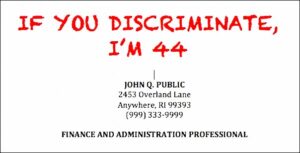Let’s Be Honest About Diversity: Age Matters Too
The conversation about diversity is finally opening up. We have a long way to go, but gender and ethnic equality are firmly on the agenda.
The conversation about diversity is finally opening up. We have a long way to go, but gender and ethnic equality are firmly on the agenda.

Age discrimination has no place at work — and yet it persists. Why? What should we do? The TalentCulture community speaks…

Do you want to lead others? Start by leaving behind age stereotypes that keep us all from getting ahead. Try these 5 steps

This week, #TChat offers 3 ways to play! We marry old school with new tech, and hopefully advance workplace culture and practices for everyone